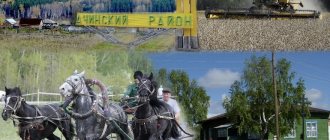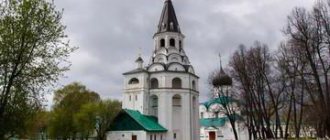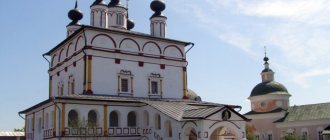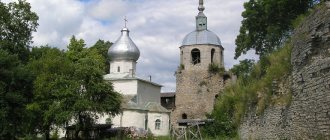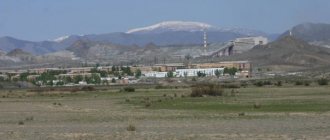The city of Petropavlovsk in Kazakhstan is a regional center in the north of the country, which is not only considered one of the most dynamically developing in the region, but is also of great interest to tourists.
Every year tens of thousands of guests come here to see ancient sights or relax in numerous local boarding houses and recreation centers.
Old fortress
It’s funny that many people don’t even know that we had a large, beautiful fortress on the high bank of Ishim. But the most amazing thing is that it has not disappeared, and you can personally look at the very place where our city was founded. This place is located on the territory at the very beginning of International Street.
Usually the religious procession ends here on July 12th. But under quarantine conditions, this global procession is impossible. By the way, right there is one of the oldest buildings in the city - the walls of the Soldiers' Church, which now houses a factory workshop. These walls are almost 200 years old!
Residence of Ablai Khan (museum complex)
Photo: tourister.ru: UGC
Abylai Khan is a ruler revered by the Kazakhs who united all nomadic tribes into a single state. He brought the Kazakhs under the protectorate of the Russian Empire in order to have an ally against the aggressive and warlike Dzungar khans.
The headquarters of Ablai Khan, created in the 1750s, has been preserved in Petropavlovsk. The museum complex contains the ruler’s personal chambers, his office, and guest rooms. The infirmary was located in the same building.
Tourists will be interested not only in the history of the construction of this building, but also in its architecture, in which the classical style, characteristic of European, or more precisely Romano-Germanic architecture of the 19th century, prevails.
We recommend viewing the interesting updated exhibition, which gives a vivid idea of the times of Abylay Khan’s reign, his personal life, traditions and customs of the Kazakh tribes of that era.
Dmitriev's house
There is a crumbling house in Podgora, which until recently was a real decoration of Comintern Street. Unique architecture, red brick and fabulous attics. More precisely, one half-attic, which has survived to this day. Unfortunately, this house is being destroyed, and soon there will be nothing left of it. Therefore, if you haven’t seen it, hurry up and watch it.
Bazhenov's house
It is in the very center and you, most likely, have passed by this beautiful house more than once, but simply did not pay attention to what a unique structure it is. It was built in the century before last! If you wanted stories about ghosts and treasures, this is the place for you. By the way, the house is still functioning; on the ground floor there is a room that is used by housing and communal services workers in Petropavlovsk.
Sculptural composition of Karasai and Agyntai-batyrs
Photo: uprkult.sko.gov.kz: UGC
The memorial dedicated to two Kazakh batyrs of the 16th–17th centuries was created by B. Doszhanov in collaboration with representatives of the Union of Artists of Kazakhstan. It was opened at the beginning of the 21st century during the period of independence of our country.
The warriors are presented in full military attire. They symbolize the warlike, courageous and independent spirit of the Kazakhs, their readiness to defend their lands and freedom.
The monument looks impressively majestic. It stands on a huge pedestal made of Kurtin granite.
Podgora and houses with wooden lace
The antiquity in the foothills of the city is living history. In some places there are still houses from the 19th century, and those built in the 20th century have incredible warmth and uniqueness.
Most of the residents of our city hardly visit Podgorye often, but I would advise you to just take a walk there, look, and be amazed at the originality of the buildings and the beauty of the sunsets. Podgora is a living museum, hurry there before everything is rebuilt.
5. Central square.
Now there is a monument to Karasai and Agyntai batyrs. Literally 10 meters from this place stood the beautiful Ascension Cathedral, and the square itself was the center of life.
The most significant events in the history of Petropavlovsk, church services, fairs, money, crime, revolutionary unrest of 1905-1907, 1917-1918, battles of 1921, executions, fires - everything happened here. The first communists, who were brutally killed in 1921 during the Siberian Uprising, were buried here; the fiercest battles took place here in the days when Kolchak’s army retreated to the east...
We will check the legend about the presence of an underground passage under this square one day. Have you heard of such a legend? What do you even know about your hometown?
Museums
Art Museum
st.
Leninskaya, 62 The regional museum opened in 1993. Its funds include over 3,500 exhibits: paintings, sculptures, graphics, photographs, objects of decorative and applied art.
Initially, the exhibitions featured mainly works by local artists. With the assistance of the collection, the collection was replenished with art objects donated free of charge by museums in other Russian cities. And after the exhibition “From Peninsula to Peninsula: California - Kamchatka”, American painters donated some of their paintings to the museum.
The museum has an art salon where you can buy paintings and souvenirs.
"Vulcanarium"
st. Klyuchevskaya, 34
If you find yourself in Petropavlovsk-Kamchatsky in a stormy winter, the question: where to go and how to spend an interesting time is very relevant. Go to a private scientific and educational museum with the telling name “Vulcanarium” - the excursion promises a lot of positive emotions.
The exhibition, which tells about the structure and eruptions of volcanoes in an accessible form, opened in 2021 with the assistance of a scientist and employee of the Russian Academy of Sciences Sergei Samoilenko.
In addition to models and photographs, the stands feature interactive models demonstrating lava eruption in action. Also here you can find out what pyroclastic flows are, why eruptions occur, how seismographs work and a lot of other interesting information, one way or another related to volcanoes and their study.
Geological Museum
st. Beringa, 117
The museum, dedicated to the mineral resources of the rich Kamchatka region, was founded in 1968. There are 3 exhibitions waiting for visitors here:
- The first hall displays a collection of minerals from all over the world: China, the Czech Republic, Uzbekistan, Mongolia, India and other countries.
- The second contains ore samples from numerous regional deposits.
- The third hall displays the geological rocks that make up the peninsula.
Museum of Military Glory
st. Radio communications, 69
The Military History Museum opened in 1959 with the assistance of Vice Admiral Shchedrin, Hero of the Soviet Union. The funds contain over 12 thousand exhibits, including samples of weapons, military awards, banners, photographs and letters from front-line soldiers.
The highlight of the exhibition is 2 dioramas telling about the Kuril landing operation in 1945 and the defense of the city in 1854. Military equipment is presented at the open-air exhibition. There is also a monument to submarine sailors who died during the Second World War.
Boy "Let it always be..."
According to legend, this boy was drawn not from some handsome Moscow child, but from our Petropavlovsk child. In 2005, I worked at the Prospekt SK newspaper and a city resident sent us a letter who claimed that the drawing was made from his photograph. A photo was attached, but unfortunately it is no longer there. Considering that the house was built in 1969-1970, this “boy” should be at least retired...
Monument to Abai and Pushkin
Photo: rutraveller.ru: UGC
This sculptural composition is dedicated to the two greatest poets of the Kazakh and Russian peoples. It symbolizes the commonwealth of two cultures: between the figures of the poets lies the Tree of Life - a mythological symbol of life and prosperity, the unity of times and generations, a symbol of eternity.
The opening of this monument, created by sculptor Kazbek Satybaldinov and architects Sultan Baimaganbetov and Valery Zatay, is timed to coincide with the memorable date - 2006. This year was declared the year of Abai in Russia, and Pushkin in Kazakhstan.
Mill Polyakov
You weren't here. Most likely, you don’t even know what kind of building this is... But once upon a time, this small building was the tallest in the city. It’s especially funny to think about this against the backdrop of high-rise buildings being built.
I was lucky: gently and cunningly I got into the territory of this unique structure, in which Kolchak’s machine-gun detachments were located in 1919. Watch the video from inside the mill (it’s also a cigarette factory and a workshop of the Komsomolka clothing factory) - no problem.
Behind an ugly wooden fence, guarded by a wolfhound dog, stands a four-story building of pre-revolutionary red brick architecture. This is one of the old Peter and Paul mills owned by the merchant Polyakov. Here were the machine guns of the Kolchak army, which was trying to protect Petropavlovsk from the advancing Red Army. Admiral Kolchak came here, who was confident in the strength of his troops. One way or another, the Whites lost this battle and retreated to Omsk. And in Soviet times, there was first a tobacco factory, then a clothing factory... And now the building is slowly collapsing, despite the fact that there is still production on the ground floor.
History of Petropavlovsk
In 1752, in the Novoishimskaya defensive line, located in the south of Siberia, the military fortress of St. Peter was built, around which a city grew, called Petropavlovsk. An initially wooden and later stone outpost was built on the Ishim River, which was used for defense against raids by nomads from Central Asia. The number of the garrison in some years reached 10-15 thousand people, who together with their families lived in the fortress, which at that time was the strategic center of the Ishmie region.
Already in the second half of the 18th century, simultaneously with the active development of Siberia, Petropavlovsk grew, which became an important military and trade hub connecting remote areas of Siberia with Moscow and large cities in the central part of Russia. For many decades, this city belonged to the Omsk region and was considered a district city, and its population did not exceed 50-60 thousand people. However, subsequently, with the separation of the Tobolsk province, Petropavlovsk became a center of regional significance, which gave a significant impetus to its development.
In 1920, a decree was signed on the creation of the Kazakh Autonomous Soviet Socialist Republic, to which several districts of the Omsk region and Tobolsk province were transferred for consolidation, after which Petropavlovsk became one of the largest cities in Kazakhstan. During Soviet times, there was rapid development of industry here; numerous chemical, petrochemical and metalworking enterprises were built.
Petropavlovsk became a major transport hub of the Trans-Siberian Railway, connecting China, Kazakhstan, Central Asia, and Siberia by rail.
Workers' village
What do you really know about the Workers' Village, other than that it's dark in the evenings and they sell illegal herbs? This is one of the most amazing areas of the city. There are old houses with beautiful windows, there are new houses with young residents, there are unique corners that you need to visit... Please note that I am talking about interesting things, not comfortable ones.
Where to go with a child in Petropavlovsk-Kamchatsky
Children, as well as their parents, should visit the exhibition at the USSR Museum. Here you can feel like a Soviet citizen, immerse yourself in the life and history of the disappeared state. The child will see pioneer ties and badges, study Soviet propaganda posters, touch typewriters, black-and-white portable televisions and film cameras, which have already become a rarity. The museum also has an old gramophone on which you can listen to real vinyl records. Girls will be able to get acquainted with Soviet cosmetics, and boys will most likely be interested in the USSR automobile industry.
Each child will receive an “Alenka” chocolate bar as a gift from the museum.
Information for visitors:
- address: Pogranichnaya street, building 48;
- open: 10:00–16:00, closed Monday;
- tickets: up to 100 rubles.
Another exhibition that is worth visiting with the whole family is the Vulcanarium Museum. Here children can learn a lot of interesting things about volcanoes and geysers. The museum's exhibits include samples of solidified lava found in different parts of the planet, unique minerals that can only be found near volcanoes, as well as photographs depicting the largest volcanic eruptions. In addition, the museum is equipped with an interactive exhibition where you can see how various natural phenomena are formed, and all exhibits here are allowed to be touched and turned on independently.
Museum "Vulcanarium" - the first Museum of Volcanoes in Russia
Information for visitors:
- address: Klyuchevskaya street, 34;
- open: 10.00–20.00;
- tickets: 1150 rubles, children under 16 years old - 750 rubles, children under 5 years old - free.
There are also several children's entertainment centers in the city, equipped with attractions, play areas, labyrinths and trampolines:
- “Far Away Kingdom” is located at: Pobeda Avenue, building 47;
- “Karabum” operates on Toporkova Street, 1A;
- "Tili-Mili" is located on Kosmichesky Proezd, 3A.
A park
You can’t forget about it even though it’s a very pop place now. Our park is interesting not because there are a lot of trees, and not even because you may remember what it looked like before the paving stones and the bad fountain. The good thing about the park is that this is the very place where you get peace without valerian, where you can walk for hours and think about the most important things...
What are your favorite places in the city?
Modern city life
Petropavlovsk today is a large regional center of Kazakhstan, with a population of 218,000 people. The main ethnic composition of the population of Petropavlovsk is Russians, who make up about 60% of the total number of residents. Today Petropavlovsk is the center of heavy engineering in Kazakhstan. There are several large factories here that produce special and drilling equipment for oil and gas companies.
Tourists in Petropavlovsk are recommended to visit:
- residence of Abylai Khan;
- the estate of the merchant Valit Yangurazov;
- Kyzyl Zhar mosque;
- local history museum.
The city has a well-developed Internet and various forums where you can read the latest news about life in Petropavlovsk. Newspapers are also published and there is a popular TV channel dedicated to incidents and upcoming interesting events.
There is a tourist center where you can find a tour map, information about ATMs and machines, index, code and other useful information. Construction is actively underway in Petropavlovsk; modern neighborhoods with green streets and spacious highways are being built on the site of temporary housing, which appeared in the middle of the last century.
Today, the North Kazakhstan State University and the Military Institute of the National Guard operate in Petropavlovsk.
The city hosts various festivals and celebrations; summer cycling competitions attract thousands of athletes and fans from all over the world. Petropavlovsk has been well known in recent years as a popular destination for active recreation.
Not far from the city there are numerous bases and boarding houses, which allow you to have a wonderful rest in the lap of pristine nature.



